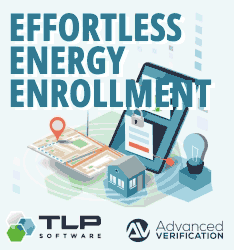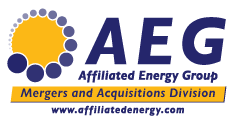|
|
|
|
|
Utility Files Tariff Language That Would Allow Switch Confirmation Letters To Be Sent Via Email
The following story is brought free of charge to readers by VertexOne, the exclusive EDI provider of EnergyChoiceMatters.com
A tariff change under a newly filed rate case from Columbia Gas in Pennsylvania would provide that switch confirmation letters could be sent to customers via email
Currently, Columbia's tariff includes the following language, which appears three times in the current tariff, once for each section addressing the method in which the customer agreement with a natural gas supplier (NGS) was executed (telephonic, written, internet)
The current Columbia-PA ["Company"] tariff states:
"After the Company is
notified that the Customer desires to select a new NGS, the Company
shall send written notification to the Customer seeking verification of the Customer’s intent to select a new NGS. The written notice shall be
mailed by the end of the next business day following the receipt of the
notification of a selection of an NGS. The written notification will explain
the five day waiting period in which the selection of the NGS may be
canceled before the change takes place and the date service with the
new NGS will begin (unless canceled within the five-day waiting period). The five-day waiting period shall commence on the day the written notice
is sent."
The proposed tariff under the rate case states:
"After the
Company is notified that the Customer desires to select a new NGS, the
Company shall send written notification to the Customer seeking verification of the Customer’s intent to select a new NGS. The written
notice shall be mailed or emailed by the end of the next business day
following the receipt of the notification of a selection of an NGS. The
written notification will explain the five day waiting period in which the
selection of the NGS may be canceled before the change takes place
and the date service with the new NGS will begin (unless canceled within
the five-day waiting period). The five-day waiting period shall commence
on the day the written notice is sent."
Note that the new tariff language uses language stating "or emailed", suggesting that email would replace a mailed confirmation letter, not supplement it
Note that the proposed tariff would only make this modification -- allowing a switch confirmation letter to be emailed -- to the tariff sections governing written and internet NGS enrollments. The proposed tariff does not make a change to the current language -- which requires a physical mailing of the letter -- to the tariff section governing telephonic enrollments. However, because the existing confirmation letter language for all three enrollment methods is identical, and because no testimony indicates that telephonic sales are intended to be treated separately under the change, the lack of change to the telephonic enrollment language may be a scrivener's error
ECM also notes that testimony in support of this change could be read as suggesting that the letter provides notification "to an NGS"; however, the tariff language above is clearly addressing the switch confirmation letter to customers
Specifically, testimony from Columbia in support of the change states, "These pages were modified to add email as a method of communicating NGS
offerings to customers [discussed further below], as well as for the Company to communicate a customer’s
selection to an NGS."
Separately, Columbia proposes language allowing Columbia to email, rather than mail, new customers a list of retail suppliers if requested by the customer
Currently, upon being contacted by a customer requesting service, Columbia will advise the customer that
choice service is available and that Columbia can mail the customer a list of licensed NGSs offering
retail service in Columbia's service territory, "with appropriate contact information for those suppliers."
The change would allow this supplier list to be emailed to customers
Under the rate case, Columbia would update its Merchant Function Charge uncollectible expense ratios as follows:
These MFC uncollectible expense ratios are applied to the applicable gas supply cost to develop a bypassable MFC. Since the gas supply cost will change by the time the new MFC uncollectible expense ratios are set, the resulting MFC charges are not provided here
The MFC uncollectible expense ratios also equal the uncollectibles discount under Columbia's purchase of receivables program, and the POR uncollectibles discount will be updated to reflect any new MFC uncollectible expense ratios
Columbia does not propose any change in the bypassable Gas Procurement Charge (Rider GPC) as part of the rate case
The proposed tariff also memorializes a prior order from the PUC, in Columbia's universal service proceeding, in which Columbia received approval to terminate the prior requirement that Columbia would solicit interest from retail suppliers to serve customer assistance program (CAP) customers in an aggregation. Columbia cited a lack of interest from NGSs in ending such CAP supply RFPs
In another tariff change that reflects current process,
Columbia filed a change in the language for a customer's annual quantity under General Distribution Service
The current tariff provides:
"The currently effective Maximum Daily Quantity and annual quantity are subject to adjustment
by the Company no more than one time each year, to reflect the Customer’s currently effective
Maximum Daily Quantity based on data ending March 31 and annual quantities experienced in
the most recent November to October period, except an adjustment may be made at any time
upon agreement of the Customer and the Company."
The proposed tariff, which reflects current process, provides:
"The currently effective Maximum Daily Quantity and annual quantity are subject to adjustment
by the Company no more than one time each year, to reflect the Customer’s currently effective
Maximum Daily Quantity based on data ending March 31 and annual quantities based on a
three-year average, using the previous 36 months ending March 31, except an adjustment may
be made at any time upon agreement of the Customer and the Company."
Docket R-2025-3053499
Copyright 2025 EnergyChoiceMatters.com. Unauthorized copying, retransmission, or republication
prohibited. You are not permitted to copy any work or text of EnergyChoiceMatters.com without the separate and express written consent of EnergyChoiceMatters.com
Utility Files To Lower Merchant Function Charge
March 24, 2025
Email This Story
Copyright 2025 EnergyChoiceMatters.com
Reporting by Paul Ring • ring@energychoicematters.com
Uncollectible expense ratio
Current Proposed
Residential 1.67927% 1.57578%
Non-residential 0.46215% 0.41341%
|
|
|
|
|







